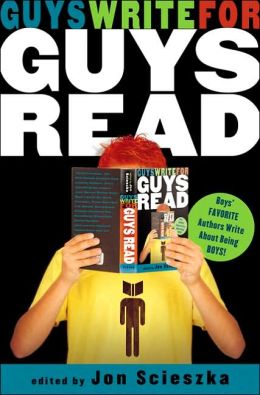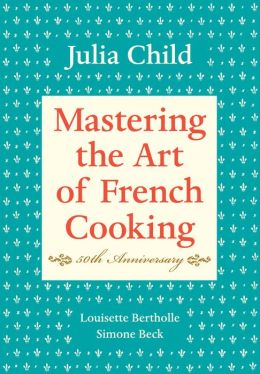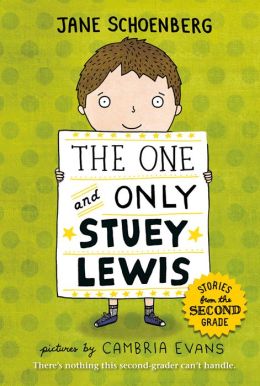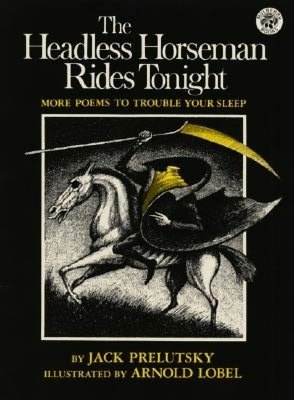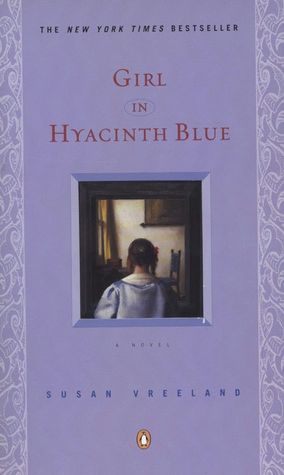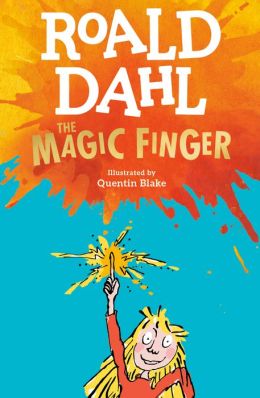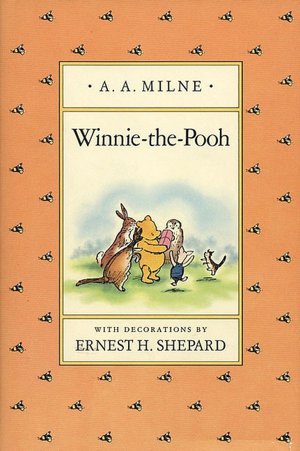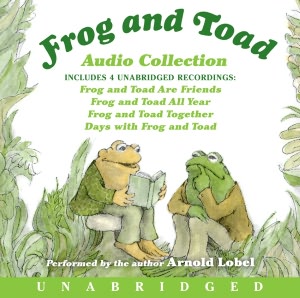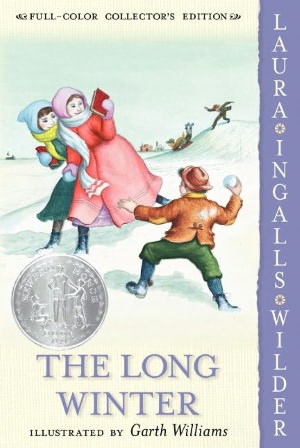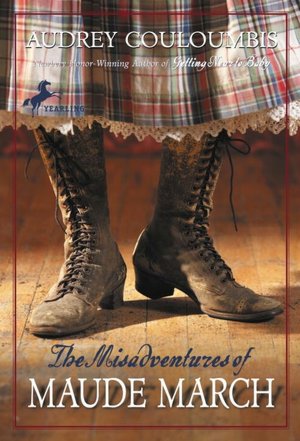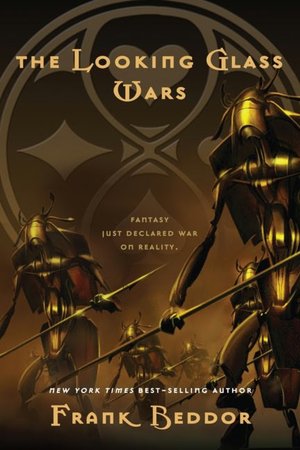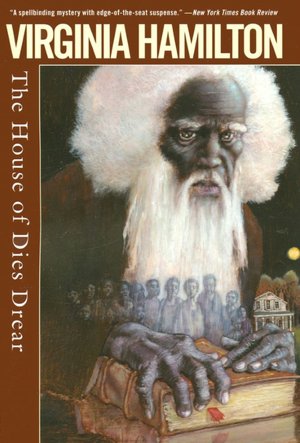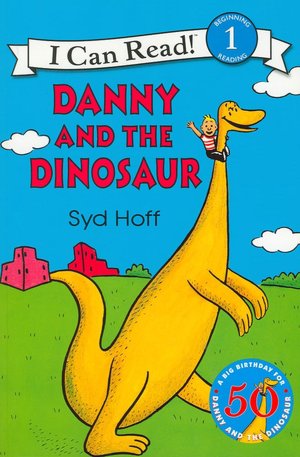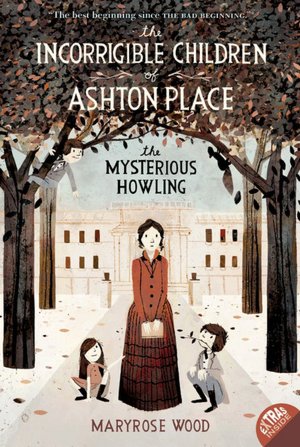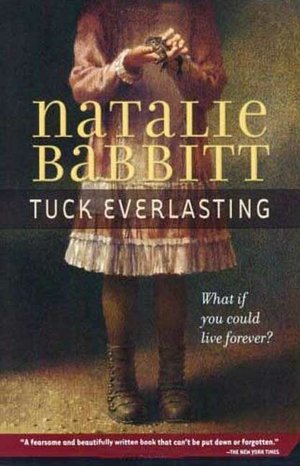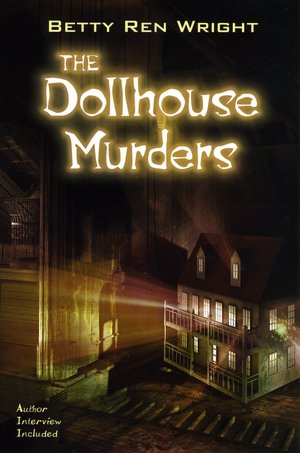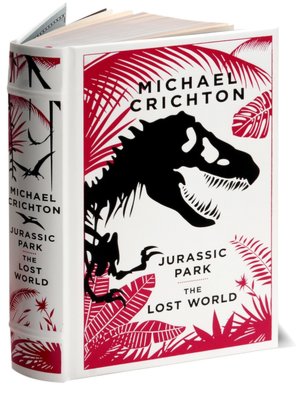Guys Write for Guys Read:
Boys' Favorite Authors Write about Being Boys
edited by Jon Scieszka
As an admitted reader, I am uncomfortable making statements like,"It is a great girl book!" I am also leery of book jackets that scream, "If you are a boy, PICK ME UP! PICK ME UP!" For example, my treasured copy of The Secret Garden, remains clad in its worn pale green jacket. The cover has an oval shaped painting of Mary dressed in coat and hat as she emerges from the garden gate. The oval is surrounded by a border of roses. If a boy picked up this book, it would say to him, "I am a book for girls," and that would be that. Sadly, this boy would miss out on two remarkable boys, Dickon and Colin. They each have their own story to tell and it is worth listening to, whether you are a girl or a boy.
With that said, I do live in the real world, and I watch as my 7th and 8th grade girls rush to the books depicting a regally dressed young heroine on the cover. I realize that a soldier or dragon can go a long way to encouraging a boy to open the cover of a new title. And, I know that we loose boys to our newer forms of entertainment at a much higher rate than girls.
To improve the odds of boys staying in books, Jon Scieszka, author of The True Story of the 3 Little Pigs, launched his Guys Read web site. Additionally, he edited Guys Write for Guys Read. This book is a high energy collection of short works: stories, essays, columns, cartoons, anecdotes, and artwork by today's most popular writers and illustrators. Guys Write features work from Brian Jacques, Jerry Spinelli, Chris Crutcher, Mo Willems, Chris Van Allsburg, Matt Groening, Neil Gaiman, the editors and columnists from Sports Illustrated,The Onion and Esquire magazines, and more.
Along with this collection, you will find Guys Read Thrillers, Guys Read Funny Business and Guys Read the Sports Pages. As I have admitted before, I am a fan of shorter work. The pace suits my sometimes wondering attention. I also adore collections containing different authors. It lets me choose a story that suits my mood each time I sit down to read.
20.12.12
17.12.12
Why not read a cook book?
For the past few days, I have been cooking treats for Christmas. I am not much of a cook, to tell the truth, but I do have a few favorite recipes. This year, I prepared these cookies I invented, with the help of a cookbook, and my grandmother's peanut butter fudge. The recipe for the fudge is a treasure, as it is in her handwriting. I read it this year, thinking of her energy and willingness to use anything as a teachable moment. Every time I find myself reading in the course of the day, I hear her voice reminding me to point it out to my son. This would reinforce that reading is meant to do more than simply entertain.
This all leads me to my point- When people stop and ask me how to help their child become a better reader, I tell them to be a reading role model. Never
stop reading. You may not be the kind of person who enjoys fiction, but I
bet you read something every day. Are
you a lover of current events? Then,
share an interesting article from a newspaper or magazine with your
toddler. Are you a cook? Show your children the recipes from which you
work. Teach them to read the specialized
format. If you need to read reports for
work, make time to do it in front of your children, no matter what their
age. They will see that reading is something
that will sustain them into adulthood.
Finally, be sure to read in front of them and not just the books you are reading aloud to them. They will believe you when you say reading is important if they see you making it important for yourself. So, this winter break, pick up something with words that you need/want to read and share it with your reader.
13.12.12
Nothing like a Good Magazine
Nothing like a Good Magazine
In the last few days, I made time to sit down and read my five magazines: Oxford American, the Horn Book, School Library Journal, Sun and Southern Living. I love magazines. The day I get them, I flip through to see what catches my eye and I read it on the spot. Then, they find their way to my reading stack for some detailed attention on a later date. This month's issues were filled with wonderful books, stories, destinations, and food.
My son also looks forward to his periodicals. He receives Ranger Rick. It is published by the National Wildlife Federation, along with Ranger Rick Jr, which is targeted to 4-7 year old kids. These days, he heads straight to the jokes and then reads about the animals; all birds first if they are addressed. He is now 12, so this Christmas, rather than renew his Ranger Rick subscription, my mom is sending Popular Mechanics. He is going to love it.
The beauty of a magazine, as you may know, is that it addresses your specific interests. For your children, it can also expose them to the non-fiction they may be craving. They don't require a big commitment, and you can pick them up to read, even if you only have a few minutes.
If you are looking for a quick and reoccurring gift for your reader this Christmas, consider a magazine subscription. Below you will find the links to some of the more popular publications:
In the last few days, I made time to sit down and read my five magazines: Oxford American, the Horn Book, School Library Journal, Sun and Southern Living. I love magazines. The day I get them, I flip through to see what catches my eye and I read it on the spot. Then, they find their way to my reading stack for some detailed attention on a later date. This month's issues were filled with wonderful books, stories, destinations, and food.
My son also looks forward to his periodicals. He receives Ranger Rick. It is published by the National Wildlife Federation, along with Ranger Rick Jr, which is targeted to 4-7 year old kids. These days, he heads straight to the jokes and then reads about the animals; all birds first if they are addressed. He is now 12, so this Christmas, rather than renew his Ranger Rick subscription, my mom is sending Popular Mechanics. He is going to love it.
The beauty of a magazine, as you may know, is that it addresses your specific interests. For your children, it can also expose them to the non-fiction they may be craving. They don't require a big commitment, and you can pick them up to read, even if you only have a few minutes.
If you are looking for a quick and reoccurring gift for your reader this Christmas, consider a magazine subscription. Below you will find the links to some of the more popular publications:
- Cricket- publishes magazines for audiences 6 months to 14 years old. Multiple subjects are covered in their many issues including Stories and Poems, Science, History, Archaeology, and Culture.
- National Geographic Kids
- American Girl Magazine
- Sports Illustrated Kids
Does your reader receive a magazine you could recommend?
10.12.12
The One and Only Stuey Lewis
The One and Only Stuey Lewis
by Jane Schoenberg
With the impending winter break and all of the school requirements that come with it, I suspended book clubs for the months of December and January. I will meet back up with the kids in February. In the mean time, I have stacks of books to read and consider. I approached the stack today to find a book recommended to me by a third grade boy on the top. The green cover makes it stand out, and for this girl of the 80's, the name could only bring back memories of Huey Lewis and the News; "That's the Power of Love!"
Much to my delight, it was a good read. The One and Only Stuey Lewis has four chapters that are really short stories. In the first story we meet Stuey, a second grader, who is afraid to admit he is "still" not a good reader. His best friend Will is an excellent reader. Stuey has a caring teacher,who discovers his secret, and admits to him that she was not a great reader until the end of 3rd grade. This gives Stuey the confidence he needs to quietly begin his journey to becoming a capable reader.
Each of the chapters has a soft lesson. What I like best about it is that the adults in the story help Stuey, rather than adding to the stupidity of the tale. It makes me think a little of my beloved Great Brain. If your new reader likes the book, there are others in the series.
by Jane Schoenberg
With the impending winter break and all of the school requirements that come with it, I suspended book clubs for the months of December and January. I will meet back up with the kids in February. In the mean time, I have stacks of books to read and consider. I approached the stack today to find a book recommended to me by a third grade boy on the top. The green cover makes it stand out, and for this girl of the 80's, the name could only bring back memories of Huey Lewis and the News; "That's the Power of Love!"
Much to my delight, it was a good read. The One and Only Stuey Lewis has four chapters that are really short stories. In the first story we meet Stuey, a second grader, who is afraid to admit he is "still" not a good reader. His best friend Will is an excellent reader. Stuey has a caring teacher,who discovers his secret, and admits to him that she was not a great reader until the end of 3rd grade. This gives Stuey the confidence he needs to quietly begin his journey to becoming a capable reader.
Each of the chapters has a soft lesson. What I like best about it is that the adults in the story help Stuey, rather than adding to the stupidity of the tale. It makes me think a little of my beloved Great Brain. If your new reader likes the book, there are others in the series.
5.12.12
The Headless Horseman Rides Tonight
by Jack Prelutsky
Illustrated by Arnold Lobel
In an effort to take a stroll through a variety of literature, today I am going to talk a little bit about poetry. Let me first say that I am not always a fan. If is doesn't rhyme or have a hit you over the head rhythm, I usually can't find my way to the work. This time of the year a lot of the more seasonal poems find their way into my life: How the Grinch Stole Christmas and Twas the Night Before Christmas. These are poems I can read loud and proud. It is the free verse that leaves me wanting, at times.
My first introduction to Jack Prelutsky was through his book My Parents Think I'm Sleeping, that encourages children to sneak read. The book caused him a bit of controversy. The book revealed the man's true soul to me and I was an immediate fan. As I looked further into his writing, I came across his poetry collections illustrated by Arnold Lobel, of my beloved Frog and Toad. I was hooked.
The collection, The Headless Horseman Rides Tonight, might be better introduced around Halloween, but the kids in my book clubs like horror anytime of the year. The poems do rhyme and the rhythm is obvious, so the poems are fun to share aloud. I would recommend a pre-read for your best performance. If your reader likes these poems, Prelutsky has many more collections available. Happy Reading!
by Jack Prelutsky
Illustrated by Arnold Lobel
In an effort to take a stroll through a variety of literature, today I am going to talk a little bit about poetry. Let me first say that I am not always a fan. If is doesn't rhyme or have a hit you over the head rhythm, I usually can't find my way to the work. This time of the year a lot of the more seasonal poems find their way into my life: How the Grinch Stole Christmas and Twas the Night Before Christmas. These are poems I can read loud and proud. It is the free verse that leaves me wanting, at times.
My first introduction to Jack Prelutsky was through his book My Parents Think I'm Sleeping, that encourages children to sneak read. The book caused him a bit of controversy. The book revealed the man's true soul to me and I was an immediate fan. As I looked further into his writing, I came across his poetry collections illustrated by Arnold Lobel, of my beloved Frog and Toad. I was hooked.
The collection, The Headless Horseman Rides Tonight, might be better introduced around Halloween, but the kids in my book clubs like horror anytime of the year. The poems do rhyme and the rhythm is obvious, so the poems are fun to share aloud. I would recommend a pre-read for your best performance. If your reader likes these poems, Prelutsky has many more collections available. Happy Reading!
3.12.12
Girl in Hyacinth Blue
Girl in Hyacinth Blue
by Susan Vreeland
I have a love for reading in general, which means I will try to read anything. I must admit, however, that I am a lover of the short story. I believe this infatuation began as this young, would-be writer stumbled onto Flannery O'Connor and Eudora Welty. As a girl of the south, I hung on their every word and relaxed in the familiar rhythm of their language. I have been thinking a lot about fiction novels, working with this blog, but wanted to shed a little light on other forms of writing: non-fiction, poetry, and short stories. For today I have chosen a hybrid.
The novel Girl in Hyacinth Blue by Susan Vreeland is a fiction novel. The interesting thing about it, to me, is that a few of its chapters, namely "Love Enough," "Love Burning," "A Night Different Form All Other Nights," and "Morningshine," were originally published as short stories. She has masterfully filled in the gaps with equally engaging stories to bring this novel to life.
The book's storyline evolves around the life of a painting by Vermeer. It begins with the most recent owner and traces its passage through households and time, chapter by chapter. The vocabulary is advanced. The multiple plots and characters add to the book's appeal and complexity. It is perfect for a high school reader who loves art. The fact that each chapter is a story unto itself makes it a great book to pick up when you just need to fill a little bit of time. Do you have a favorite short story?
by Susan Vreeland
I have a love for reading in general, which means I will try to read anything. I must admit, however, that I am a lover of the short story. I believe this infatuation began as this young, would-be writer stumbled onto Flannery O'Connor and Eudora Welty. As a girl of the south, I hung on their every word and relaxed in the familiar rhythm of their language. I have been thinking a lot about fiction novels, working with this blog, but wanted to shed a little light on other forms of writing: non-fiction, poetry, and short stories. For today I have chosen a hybrid.
The novel Girl in Hyacinth Blue by Susan Vreeland is a fiction novel. The interesting thing about it, to me, is that a few of its chapters, namely "Love Enough," "Love Burning," "A Night Different Form All Other Nights," and "Morningshine," were originally published as short stories. She has masterfully filled in the gaps with equally engaging stories to bring this novel to life.
The book's storyline evolves around the life of a painting by Vermeer. It begins with the most recent owner and traces its passage through households and time, chapter by chapter. The vocabulary is advanced. The multiple plots and characters add to the book's appeal and complexity. It is perfect for a high school reader who loves art. The fact that each chapter is a story unto itself makes it a great book to pick up when you just need to fill a little bit of time. Do you have a favorite short story?
30.11.12
The Magic Finger
The Magic Finger
by Roald Dahl
Today, I met with one of my third grade book clubs. They are my youngest readers and we are still getting to know each other, not to mention how to approach book club. One of my goals with the readers in my groups is to help them learn to "read between the lines." It doesn't take my readers long to figure out that when I ask them, "What is the book about?" I am not interested in plot points. Because I work with 3-8th graders, we do begin with the plot, but the older the reader, the faster they can move to what a book is really about.
Roald Dahl's novels are a great training ground. Think of Charlie and the Chocolate Factory. Even if you didn't get explicit information about the moral from the umpa lumpa's songs, you can come to understand the life lessons contained on its pages by the actions and attitudes of the children. Mikey loves TV so much he finds his way into the TV. Augustus loves food so much he falls into the river of chocolate. That darned gum chewer, Violet Beauregarde, just blows herself up! Now, I would guess, that these particular habits of children drove Mr. Dahl mad. But, I would further assert that he is reminding us that too much of anything is not great.
The Magic Finger, also by Dahl, teaches the lesson of empathy. The plot points go a bit like this:
When first asked what Roald Dahl means for us to learn from this novel, my youngest readers usually say, "He is against duck hunting!" Though this is possible, I have know idea what his ideas about hunting are, with a little pushing, it doesn't take them long to understand a bigger theme: we ought to think about how others feel. Or, Learn to walk in another mans shoes.
As with all of his novel, The Magic Finger offers the reader many new ways to think of themselves and new ways to live life. I highly recommend this book. It is only 64 pages and a great place for a new reader to discover this masterful writer on their own.
by Roald Dahl
Today, I met with one of my third grade book clubs. They are my youngest readers and we are still getting to know each other, not to mention how to approach book club. One of my goals with the readers in my groups is to help them learn to "read between the lines." It doesn't take my readers long to figure out that when I ask them, "What is the book about?" I am not interested in plot points. Because I work with 3-8th graders, we do begin with the plot, but the older the reader, the faster they can move to what a book is really about.
Roald Dahl's novels are a great training ground. Think of Charlie and the Chocolate Factory. Even if you didn't get explicit information about the moral from the umpa lumpa's songs, you can come to understand the life lessons contained on its pages by the actions and attitudes of the children. Mikey loves TV so much he finds his way into the TV. Augustus loves food so much he falls into the river of chocolate. That darned gum chewer, Violet Beauregarde, just blows herself up! Now, I would guess, that these particular habits of children drove Mr. Dahl mad. But, I would further assert that he is reminding us that too much of anything is not great.
The Magic Finger, also by Dahl, teaches the lesson of empathy. The plot points go a bit like this:
- Girl with a magic finger gets mad at her duck hunting neighbors.
- Girl points said finger at the neighbors, making them trade places with the ducks.
- Neighbors shrink and grow wings.
- Ducks grow and get guns.
- Ducks throw the humans out of the house and begin to hunt them down.
When first asked what Roald Dahl means for us to learn from this novel, my youngest readers usually say, "He is against duck hunting!" Though this is possible, I have know idea what his ideas about hunting are, with a little pushing, it doesn't take them long to understand a bigger theme: we ought to think about how others feel. Or, Learn to walk in another mans shoes.
As with all of his novel, The Magic Finger offers the reader many new ways to think of themselves and new ways to live life. I highly recommend this book. It is only 64 pages and a great place for a new reader to discover this masterful writer on their own.
27.11.12
Just a bit of News
Hey Everyone!
Congratulations to Rachel Gammill! She is the winner of the boot give away. I want to say a big thank you to Country Outfitters for the generous gift. Whenever you need some boots, you ought to check them out. (Thanks to Whitney Loibner for the great pic!)
Also...
This month, I started contributing to the Central Arkansas Library's Website. I am writing recommendations for them about the books in their collection. You should check it out!
Back to the books tomorrow...
26.11.12
Winnie the Pooh
Winnie-the-Pooh
by A.A. Milne
Today, I found myself alone in my house on a rainy afternoon. As I sat down to contemplate what books would be worth discussing today, Christopher Robin, dressed in raincoat and hat, moved into my mind and refused to budge. Now, I realize that many of you know Pooh, Christopher Robin and the rest of the gang, but do you remember the details of the original story's chapters? The more I focused on Christopher, outfitted for the rain, the more the wheels of my memory set to work and finally, I was delighted to remember the boy and the bear floating down the creek in an up turned umbrella on their way to save Piglet.
With this memory in tact, I headed to the bookshelf. From it, I pulled my childhood copy of Winnie-the-Pooh and began to read; both book and story are treasures to me. I smiled as I reconnected to the love shared between all of A.A. Milne's characters. My heart sang as the memories of time spent with my son, sitting on my lap as we rediscovered Pooh day after day, came rushing back to me.
So, for today, no matter how old your reader is, or the kind of weather you are having, I challenge you to step carefully into Christopher Robin's umbrella and help he and Pooh rescue Piglet. I think we just might read aloud chapter nine of Winnie-the-Pooh, "In which Piglet is entirely surrounded by water," tonight. Hopefully it will act as a time machine and transport us back to our days of snuggling and reading.
by A.A. Milne
Today, I found myself alone in my house on a rainy afternoon. As I sat down to contemplate what books would be worth discussing today, Christopher Robin, dressed in raincoat and hat, moved into my mind and refused to budge. Now, I realize that many of you know Pooh, Christopher Robin and the rest of the gang, but do you remember the details of the original story's chapters? The more I focused on Christopher, outfitted for the rain, the more the wheels of my memory set to work and finally, I was delighted to remember the boy and the bear floating down the creek in an up turned umbrella on their way to save Piglet.
With this memory in tact, I headed to the bookshelf. From it, I pulled my childhood copy of Winnie-the-Pooh and began to read; both book and story are treasures to me. I smiled as I reconnected to the love shared between all of A.A. Milne's characters. My heart sang as the memories of time spent with my son, sitting on my lap as we rediscovered Pooh day after day, came rushing back to me.
So, for today, no matter how old your reader is, or the kind of weather you are having, I challenge you to step carefully into Christopher Robin's umbrella and help he and Pooh rescue Piglet. I think we just might read aloud chapter nine of Winnie-the-Pooh, "In which Piglet is entirely surrounded by water," tonight. Hopefully it will act as a time machine and transport us back to our days of snuggling and reading.
22.11.12
The Tale of Despereaux
The Tale of Despereaux
by Kate DiCamillo
Today is Thanksgiving and most of my girlfriends are working feverishly, and with joy I might add, to create spellbinding meals for their families. I have been checking in with many of them through their social media, and it is amazing how much love Pioneer Woman is getting out in the blogosphere. Between the cinnamon rolls and the perfect pie crust, I must admit I have been looking longingly at the Kitchen Aid mixers door buster specials in the Black Friday ads. I am, instead, listening to some of my favorite radio shows from the past, writing, and thinking about what books I get to read next. Don't get me wrong, I do love food and eating, but I luckily have a mother who also loves to prepare meals for her family. I am a grateful benefactor of her passions and it frees up my time so I get to spend some quiet time dwelling with mine.
Clearly, I prefer a day spent with a story over a day spent with food and it brought to mind a delightful scene in Kate DiCamillo's Tale of Despereaux. Despereaux, a small mouse whose siblings have taken it upon themselves to educate him in the ways of being a mouse, accompanies his sister Merlot into the castle library for a lesson in eating paper.
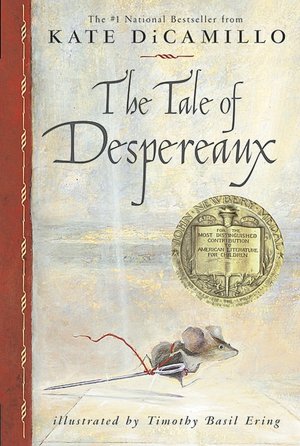 "Here," said Merlot, "follow me, small brother, and I will instruct you on the fine points of how to nibble paper."
"Here," said Merlot, "follow me, small brother, and I will instruct you on the fine points of how to nibble paper."
Merlot scurried up a chair and from there hopped onto a table on which there sat a huge, open book.
"This way, small brother," she said as she crawled onto the pages of the book.
And Despereaux followed her from the chair, to the table, to the page.
"Now then," said Merlot. "This glue, here, is tasty, and the paper edges are crunchy and yummy, like so." She nibbled the edge of the page and then looked over at Despereaux.
"You try," she said "First a bite of some glue and then follow it with a crunch of paper. And these squiggles. They are very tasty."
Despereaux looked down at the book, and something remarkable happened. The marks on the pages, the "squiggles" as Merlot referred to them, arranged themselves into shapes. The shapes arranged themselves into words, and the words spelled out a delicious and wonderful phrase: Once Upon a Time.
"'Once upon a time,'" whispered Despereaux.
"What?" said Merlot.
"Nothing."
"Eat," said Merlot.
"I couldn't possibly," said Despereaux, backing away from the book.
"Why?"
"Um," said Despereaux. "It would ruin the story."
This interaction just confirms Merlot's belief that Despereaux is unusual and helps the reader understand that Despereaux's tale will be interesting at least. The narrator tells us directly, "Reader, you must know that an interesting fate awaits almost everyone, mouse or man, who does not conform."
This novel has everything we have come to expect from Kate DiCamillo. The plot is original, lively, and twisted. It tells the story of the underdog and assures the reader that justice does exist. You and your reader will come to love both the heroes and the villains And, the adventure draws you down the staircase to a remarkable end. "What happens in the end?" you might ask. Well, Ms. DiCamillio would respond, "Reader, it is your destiny to find out."
Help! I am looking for some current realistic fiction for my 8th grade book club, which is made up of girls. Everything I pick up is filled with sex and/or booze, which they are not up for (at least no yet) or has a historical angle. They just finished Sarah's Key and loved it. But, now they want to try something without "a history lesson." What would you recommend?
by Kate DiCamillo
Today is Thanksgiving and most of my girlfriends are working feverishly, and with joy I might add, to create spellbinding meals for their families. I have been checking in with many of them through their social media, and it is amazing how much love Pioneer Woman is getting out in the blogosphere. Between the cinnamon rolls and the perfect pie crust, I must admit I have been looking longingly at the Kitchen Aid mixers door buster specials in the Black Friday ads. I am, instead, listening to some of my favorite radio shows from the past, writing, and thinking about what books I get to read next. Don't get me wrong, I do love food and eating, but I luckily have a mother who also loves to prepare meals for her family. I am a grateful benefactor of her passions and it frees up my time so I get to spend some quiet time dwelling with mine.
Clearly, I prefer a day spent with a story over a day spent with food and it brought to mind a delightful scene in Kate DiCamillo's Tale of Despereaux. Despereaux, a small mouse whose siblings have taken it upon themselves to educate him in the ways of being a mouse, accompanies his sister Merlot into the castle library for a lesson in eating paper.
 "Here," said Merlot, "follow me, small brother, and I will instruct you on the fine points of how to nibble paper."
"Here," said Merlot, "follow me, small brother, and I will instruct you on the fine points of how to nibble paper." Merlot scurried up a chair and from there hopped onto a table on which there sat a huge, open book.
"This way, small brother," she said as she crawled onto the pages of the book.
And Despereaux followed her from the chair, to the table, to the page.
"Now then," said Merlot. "This glue, here, is tasty, and the paper edges are crunchy and yummy, like so." She nibbled the edge of the page and then looked over at Despereaux.
"You try," she said "First a bite of some glue and then follow it with a crunch of paper. And these squiggles. They are very tasty."
Despereaux looked down at the book, and something remarkable happened. The marks on the pages, the "squiggles" as Merlot referred to them, arranged themselves into shapes. The shapes arranged themselves into words, and the words spelled out a delicious and wonderful phrase: Once Upon a Time.
"'Once upon a time,'" whispered Despereaux.
"What?" said Merlot.
"Nothing."
"Eat," said Merlot.
"I couldn't possibly," said Despereaux, backing away from the book.
"Why?"
"Um," said Despereaux. "It would ruin the story."
This interaction just confirms Merlot's belief that Despereaux is unusual and helps the reader understand that Despereaux's tale will be interesting at least. The narrator tells us directly, "Reader, you must know that an interesting fate awaits almost everyone, mouse or man, who does not conform."
This novel has everything we have come to expect from Kate DiCamillo. The plot is original, lively, and twisted. It tells the story of the underdog and assures the reader that justice does exist. You and your reader will come to love both the heroes and the villains And, the adventure draws you down the staircase to a remarkable end. "What happens in the end?" you might ask. Well, Ms. DiCamillio would respond, "Reader, it is your destiny to find out."
Help! I am looking for some current realistic fiction for my 8th grade book club, which is made up of girls. Everything I pick up is filled with sex and/or booze, which they are not up for (at least no yet) or has a historical angle. They just finished Sarah's Key and loved it. But, now they want to try something without "a history lesson." What would you recommend?
19.11.12
I am grateful for Frog and Toad
by Arnold Lobel
On my Facebook page and my twitter feed, I keep seeing people posting the things for which they are grateful . As you might imagine, I am grateful that someone thought it was important for me to learn how to read. I am grateful that those same someones, continued to support me as a reader. I am extremely grateful that I have been able to share my love of reading with my son. And finally, I am grateful to the authors whose engaging words keep me coming back for more.
One of my first reading memories includes the library's bookmobile and all of Arnold Lobel's Frog and Toad books. In my day, the books were published in hardback and the books were not leveled. The simple friendship shared between these dapper amphibians made me smile and kept me reading. I love how every book contains multiple short stories on a theme- just what an early reader needs to help transition to chapter books. The adventures of these characters helped me explore true friendship, the seasons and the simple pleasures and fears of life. It is likely that you are familiar with the titles, but just in case, here is a list:
- Frog and Toad are Friends
- Frog and Toad Together
- Days with Frog and Toad
- Frog and Toad All Year.
They are also available in an audio collection.
If you love these boys as much as me, keep an eye out for the stuffed animals in their likeness. I found them for my son when he was about 4 years old. They make me happy.
What book(s) are you grateful to have found in your life?
Just a reminder...
you can still register for the Country Outfitter Boot Giveaway. Click here for the details.
14.11.12
The Long Winter
The Long Winter
by Laura Ingalls Wilder
I got in my car this morning to find a little frost and a ton of leaves on the windshield. I wasn't in a rush, so I decided to let the defroster handle the ice. As I sat in the car, listening to NPR's Morning Edition, a story about the super storm Sandy began to play. Waiting for my frost to melt, I couldn't help worrying about all of those families, struggling with no heat as winter continues its slow march toward us all.
Now, I live in the south, so we will have many more days of no frost before we settle into winter for good. Our winters tease us, and, quite truthfully, rarely cause a big fuss. But for the Ingalls family in South Dakota, the teasing blizzards quickly turned into the long winter that is described in this book from Laura Ingalls Wilder.
This enduring collection of novels has allowed many children to understand America's Westward expansion. Laura makes the life seem romantic. She reminds us of a time long past, while giving us clues about the social realities of the time. This novel is particularly poignant in that it speaks to the isolation found in the newly-forming communities of the West. I also like this book for children because it gives their imaginations a chance to work. This novel is not set in the town of Walnut Grove, which is described in detail in the television show. Often, children will give this book a chance because they believe it to be a new look at Laura's life. I just reread it myself with a class of adults, and its lessons about interpersonal relationships made for a lively discussion. I recommend this classic novel to anyone who is interested in the growth of America, child or adult.
Don't forget the boot giveaway. Click here for the details.
by Laura Ingalls Wilder
I got in my car this morning to find a little frost and a ton of leaves on the windshield. I wasn't in a rush, so I decided to let the defroster handle the ice. As I sat in the car, listening to NPR's Morning Edition, a story about the super storm Sandy began to play. Waiting for my frost to melt, I couldn't help worrying about all of those families, struggling with no heat as winter continues its slow march toward us all.
Now, I live in the south, so we will have many more days of no frost before we settle into winter for good. Our winters tease us, and, quite truthfully, rarely cause a big fuss. But for the Ingalls family in South Dakota, the teasing blizzards quickly turned into the long winter that is described in this book from Laura Ingalls Wilder.
This enduring collection of novels has allowed many children to understand America's Westward expansion. Laura makes the life seem romantic. She reminds us of a time long past, while giving us clues about the social realities of the time. This novel is particularly poignant in that it speaks to the isolation found in the newly-forming communities of the West. I also like this book for children because it gives their imaginations a chance to work. This novel is not set in the town of Walnut Grove, which is described in detail in the television show. Often, children will give this book a chance because they believe it to be a new look at Laura's life. I just reread it myself with a class of adults, and its lessons about interpersonal relationships made for a lively discussion. I recommend this classic novel to anyone who is interested in the growth of America, child or adult.
Don't forget the boot giveaway. Click here for the details.
12.11.12
The Misadventures of Maude March ( and a boot give away!)
The Misadventures of Maude March
by Audrey Couloumbis
I have long been fascinated with the West. I guess it started with Laura Ingalls' travels to Wisconsin and just kept going westward. The stories of Wyatt Earp, Doc Holiday and all of the characters who found their way to Deadwood, SD, fill my imagination still today. I really love it when I find a story of a girl who braved the west. I read just about any legend, historical fiction or non-fiction that concerns the 19th and early 20th Century and American's westward expansion. I was thrilled to find this novel by Audrey Couloumbis a few years ago for my 4th grade book club. It was a club filled with adventurous young girls, and this story filled the bill.
This is a true romp through the west. The narrator, Sally, is an eleven year old girl. She is a voracious reader of dime store westerns. She idolizes the heroes and is thrilled by the villains When Sally and her sister, Maude, are orphaned for the second time, they find themselves in the custody of a family that essentially sentences them to a life of indentured servitude. Unwilling to stand for the abuse, Maude and Sally, break into their old home, pack what are their belongings, and make their way alone to find a long lost uncle in Independence, MO. To improve their chances of safe travel, the girls disguise themselves as boys and set out. Along the trail, though, there are scads of mishaps and scrapes, and soon they are being pursued for bank-robbing, horse-thievery, and murder.
In honor of the girls' disguises and their adventures in the West, I want to offer you a chance to win a pair a boots!
So, Now for the fun part, Country Outfitter is giving you a chance to win a $150 gift certificate to go shopping on them! You could choose a lace-up style or more of a work boot. I found a square-toed work boot with red stitching and a pink lining by Ariat that I love. They are very comfortable and work beautifully with jeans- my favorite thing to wear.
We are making it soooo simple for you to enter in just two little steps.
by Audrey Couloumbis
I have long been fascinated with the West. I guess it started with Laura Ingalls' travels to Wisconsin and just kept going westward. The stories of Wyatt Earp, Doc Holiday and all of the characters who found their way to Deadwood, SD, fill my imagination still today. I really love it when I find a story of a girl who braved the west. I read just about any legend, historical fiction or non-fiction that concerns the 19th and early 20th Century and American's westward expansion. I was thrilled to find this novel by Audrey Couloumbis a few years ago for my 4th grade book club. It was a club filled with adventurous young girls, and this story filled the bill.
This is a true romp through the west. The narrator, Sally, is an eleven year old girl. She is a voracious reader of dime store westerns. She idolizes the heroes and is thrilled by the villains When Sally and her sister, Maude, are orphaned for the second time, they find themselves in the custody of a family that essentially sentences them to a life of indentured servitude. Unwilling to stand for the abuse, Maude and Sally, break into their old home, pack what are their belongings, and make their way alone to find a long lost uncle in Independence, MO. To improve their chances of safe travel, the girls disguise themselves as boys and set out. Along the trail, though, there are scads of mishaps and scrapes, and soon they are being pursued for bank-robbing, horse-thievery, and murder.
In honor of the girls' disguises and their adventures in the West, I want to offer you a chance to win a pair a boots!
So, Now for the fun part, Country Outfitter is giving you a chance to win a $150 gift certificate to go shopping on them! You could choose a lace-up style or more of a work boot. I found a square-toed work boot with red stitching and a pink lining by Ariat that I love. They are very comfortable and work beautifully with jeans- my favorite thing to wear.
We are making it soooo simple for you to enter in just two little steps.
1. Click Here & submit your email address to Country Outfitter (you may receive occasional emails from them).
2. Leave a comment here on the blog letting me know you submitted your email to Country Outfitter.
A random winner will be selected in two weeks (November 26, 2012 after 9pm EST).
Good Luck!
A Break for Technical Interuption:
DISCLOSURE: CountryOutfitter, a retailer of Ariat, gave me a pair Women's Ranchbaby Square Toe Brown Rebel Boots to review.
7.11.12
Looking Glass Wars
The Looking Glass Wars
by Frank Beddor
And now to the other book for sixth grade book club this month...
Strange as it may seem, each of the sixth grade book selections for the month paid homage to Alice in Wonderland. My last post was about Gregor the Overlander by Suzanne Collins, a novel inspired by Lewis Carroll's classic. Frank Beddor has created a novel that asks us to consider that Alyss, we have been spelling her name wrong, is a true creature of Wonderland.
We first meet Alyss at her 7th birthday celebration. She is the heir to the throne, but is driven away from Wonderland as she flees from her murderous Aunt Redd. With the knowledge that her parents are dead, she emerges from the portal she escaped with into Victorian London. She falls in briefly with a motley crew of orphan's, Dickens anyone, but is quickly captured and sent to a proper orphanage. She is adopted by a minister and moves to the country. She is considered by everyone to be mad as she tells the story of her home and her ordeal. One day, she shares her adventures with Charles Dodgson (aka Carroll). He is fascinated by the tale and promises to tell her story. He writes a book, weaving in the details of "Alice's" past, but, as you may recall, it is filled with rabbit holes, tea parties and magic potions.
After reading the book, Alyss understands that Dodgson doesn't really believe her story. Frustrated, she decides to comply to the expectations of her new life, refusing to talk about her past. Eventually, she begins to doubt that Wonderland exists. She slowly melds into her new life, until it comes back to claim her. Aunt Redd is intent on killing Alyss. She sends her greatest fighter, known as "the Cat", to kill her in the other realm. Instead, Alyss makes her way back through the portal to fight for her throne.
I liked the story. I mostly liked that the Queen's power came from her ability to be wildly imaginative. If she could image something, it could become so. It will be that imagination that saves her life and Wonderland. If your reader enjoys this novel and/or Gregor the Overlander, it may be time for them to try the original.
by Frank Beddor
And now to the other book for sixth grade book club this month...
Strange as it may seem, each of the sixth grade book selections for the month paid homage to Alice in Wonderland. My last post was about Gregor the Overlander by Suzanne Collins, a novel inspired by Lewis Carroll's classic. Frank Beddor has created a novel that asks us to consider that Alyss, we have been spelling her name wrong, is a true creature of Wonderland.
We first meet Alyss at her 7th birthday celebration. She is the heir to the throne, but is driven away from Wonderland as she flees from her murderous Aunt Redd. With the knowledge that her parents are dead, she emerges from the portal she escaped with into Victorian London. She falls in briefly with a motley crew of orphan's, Dickens anyone, but is quickly captured and sent to a proper orphanage. She is adopted by a minister and moves to the country. She is considered by everyone to be mad as she tells the story of her home and her ordeal. One day, she shares her adventures with Charles Dodgson (aka Carroll). He is fascinated by the tale and promises to tell her story. He writes a book, weaving in the details of "Alice's" past, but, as you may recall, it is filled with rabbit holes, tea parties and magic potions.
After reading the book, Alyss understands that Dodgson doesn't really believe her story. Frustrated, she decides to comply to the expectations of her new life, refusing to talk about her past. Eventually, she begins to doubt that Wonderland exists. She slowly melds into her new life, until it comes back to claim her. Aunt Redd is intent on killing Alyss. She sends her greatest fighter, known as "the Cat", to kill her in the other realm. Instead, Alyss makes her way back through the portal to fight for her throne.
I liked the story. I mostly liked that the Queen's power came from her ability to be wildly imaginative. If she could image something, it could become so. It will be that imagination that saves her life and Wonderland. If your reader enjoys this novel and/or Gregor the Overlander, it may be time for them to try the original.
Gregor the Overlander
Gregor the Overlander
by Suzanne Collins
So, The Hunger Games by Suzanne Collins has finally arrived at my house. I had read it before, but Friday, my son had it in his hands. He had finished The Odyssey in class and made his new choice from his teacher's library. Today, he made it home with Cathching Fire and I am sure Mockingjay won't lag too far behind. This series and the phenomenon it has created has been discussed here and in many other places. Today, I thought I would tell you about another series written by the same author.
Gregor the Overlander is a story about a boy and his adventures in a place known to him as the Underland. We first meet Gregor as he is reminiscing about his father, who has been missing for over two years, and the life he had before he went away. For Gregor, there were good times spent with family, fewer responsibilities and a chance for summers spent as a child. But, times have changed, and he will be watching his baby sister for the summer while taking on the role of a caregiver. While doing laundry one day, Boots, Gregor's sister, finds her way into a vent on the wall. Gregor tries to catch her but instead they are both now falling down the hole. Perhaps a rabbit hole.
Underland does remind me a little of Wonderland. Gregor, like Alice, finds himself a reluctant hero, and the Underlanders need help fending off the Rats who wish to take over. The adventure begins with a prophecy told by the founder of Underland. Gregor is not convinced of his roll in the goings on of Underland, but he knows he has to get home with his sister.
The tale is a satisfying one. What I like best is that it ends in such a way as to make clear that Gregor's travels were no dream. If you have a fan of The Hunger Games series, give this series a try. The stories are not alike, but the writing is creative and original and well worth any reader's time.
by Suzanne Collins
So, The Hunger Games by Suzanne Collins has finally arrived at my house. I had read it before, but Friday, my son had it in his hands. He had finished The Odyssey in class and made his new choice from his teacher's library. Today, he made it home with Cathching Fire and I am sure Mockingjay won't lag too far behind. This series and the phenomenon it has created has been discussed here and in many other places. Today, I thought I would tell you about another series written by the same author.
Gregor the Overlander is a story about a boy and his adventures in a place known to him as the Underland. We first meet Gregor as he is reminiscing about his father, who has been missing for over two years, and the life he had before he went away. For Gregor, there were good times spent with family, fewer responsibilities and a chance for summers spent as a child. But, times have changed, and he will be watching his baby sister for the summer while taking on the role of a caregiver. While doing laundry one day, Boots, Gregor's sister, finds her way into a vent on the wall. Gregor tries to catch her but instead they are both now falling down the hole. Perhaps a rabbit hole.
Underland does remind me a little of Wonderland. Gregor, like Alice, finds himself a reluctant hero, and the Underlanders need help fending off the Rats who wish to take over. The adventure begins with a prophecy told by the founder of Underland. Gregor is not convinced of his roll in the goings on of Underland, but he knows he has to get home with his sister.
The tale is a satisfying one. What I like best is that it ends in such a way as to make clear that Gregor's travels were no dream. If you have a fan of The Hunger Games series, give this series a try. The stories are not alike, but the writing is creative and original and well worth any reader's time.
2.11.12
When You Reach Me
When You Reach Me
by Rebecca Stead
With all of the news focusing on New York City, I thought it might be nice to think about a book set there. This novel, When You Reach Me, popped into my head because I've been thinking about time travel, too.
This week in the calendar year is always a busy one around my house. We like to have a mini family celebration to close the book on a year well spent by my son. Monday night was to be our time to usher out age 11. But, life happened and our small evening exploded out of our control. To restore order in our universe, last night I turned our front door into an ancient portal to the past and we re-lived October 29. It was every thing we had hoped for. And, the concept of an ancient portal thrilled my son.
You will find no time machines or ancient portals to the past in Rebecca Stead's award winning, When You Reach Me, but you get a hint about the plot outcomes when you learn that one of Miranda's compasses in life is the novel A Wrinkle in Time (props for the classics). The intrigue begins with Miranda and her best friend Sal aptly navigating the neighborhoods of New York City. They are familiar with the landmarks, the safe places to go, and the people who regularly decorate the streets. But, like my week, Miranda's life gets interrupted when Sal quits talking to her, the emergency apartment key is stolen, and Miranda finds a mysterious note scrawled on a tiny slip of paper:
"I am coming to save your friend’s life, and my own.
I must ask two favors. First, you must write me a letter."
by Rebecca Stead
With all of the news focusing on New York City, I thought it might be nice to think about a book set there. This novel, When You Reach Me, popped into my head because I've been thinking about time travel, too.
This week in the calendar year is always a busy one around my house. We like to have a mini family celebration to close the book on a year well spent by my son. Monday night was to be our time to usher out age 11. But, life happened and our small evening exploded out of our control. To restore order in our universe, last night I turned our front door into an ancient portal to the past and we re-lived October 29. It was every thing we had hoped for. And, the concept of an ancient portal thrilled my son.
You will find no time machines or ancient portals to the past in Rebecca Stead's award winning, When You Reach Me, but you get a hint about the plot outcomes when you learn that one of Miranda's compasses in life is the novel A Wrinkle in Time (props for the classics). The intrigue begins with Miranda and her best friend Sal aptly navigating the neighborhoods of New York City. They are familiar with the landmarks, the safe places to go, and the people who regularly decorate the streets. But, like my week, Miranda's life gets interrupted when Sal quits talking to her, the emergency apartment key is stolen, and Miranda finds a mysterious note scrawled on a tiny slip of paper:
"I am coming to save your friend’s life, and my own.
I must ask two favors. First, you must write me a letter."
Notes keep arriving, and the contents reveal that whoever is writing them knows Miranda well. They even suggest that the author knows details about the future. Miranda gets drawn into the mystery and is convinced that she has a part to play in it.
I would recommend this book for anyone over 9 years old. And, if you were a lover of A Wrinkle in Time, you just might enjoy this one yourself.
31.10.12
The House of Dies Drear
The House of Dies Drear
by Virginia Hamilton
Tonight is Halloween. We are headed to a party and have all of the costumes planned. My husband and I will be Superman and Jimmy Oslen-(I thought Jimmy's footwear would be more comfortable than Lois Lane's.) My son is planning some type of ancient warrior. The month takes us over and begs for us to make room for the hauntings and mysteries that can be conjured up in the mind. Sticking with the theme of the month, one of my fifth grade book clubs choose The House of Dies Drear by Virginia Hamilton for our next discussion. I am no mystery writer so I will let the book cover sell it:
"The house held secrets, Thomas knew, even before he first saw it looming gray and massive on its ledge of rock. It had a century-old legend — two fugitive slaves had been killed by bounty hunters after leaving its passageways, and Dies Drear himself, the abolitionist who had made the house into a station on the Underground Railroad, had been murdered there. The ghosts of the three were said to walk its rooms...."
The pace is just right for the 4th-6th grade readers. The suspense is thrilling, but not too scary. The mysteries and the truths behind them are handled with great care. This all adds up to a haunting tale that will let your child get a good nights sleep. Though the writing far exceeds that of a Scooby Doo cartoon, the story is woven and unwoven in a similar way. To my mind it makes for a perfect introduction to the genre of mystery-that it sheds light on the Underground Railroad just adds to its charm. Encourage your young reader to give it a try and let me know what they think. If they have also read Betty Ren Wright, let me know how it compares.
by Virginia Hamilton
Tonight is Halloween. We are headed to a party and have all of the costumes planned. My husband and I will be Superman and Jimmy Oslen-(I thought Jimmy's footwear would be more comfortable than Lois Lane's.) My son is planning some type of ancient warrior. The month takes us over and begs for us to make room for the hauntings and mysteries that can be conjured up in the mind. Sticking with the theme of the month, one of my fifth grade book clubs choose The House of Dies Drear by Virginia Hamilton for our next discussion. I am no mystery writer so I will let the book cover sell it:
"The house held secrets, Thomas knew, even before he first saw it looming gray and massive on its ledge of rock. It had a century-old legend — two fugitive slaves had been killed by bounty hunters after leaving its passageways, and Dies Drear himself, the abolitionist who had made the house into a station on the Underground Railroad, had been murdered there. The ghosts of the three were said to walk its rooms...."
The pace is just right for the 4th-6th grade readers. The suspense is thrilling, but not too scary. The mysteries and the truths behind them are handled with great care. This all adds up to a haunting tale that will let your child get a good nights sleep. Though the writing far exceeds that of a Scooby Doo cartoon, the story is woven and unwoven in a similar way. To my mind it makes for a perfect introduction to the genre of mystery-that it sheds light on the Underground Railroad just adds to its charm. Encourage your young reader to give it a try and let me know what they think. If they have also read Betty Ren Wright, let me know how it compares.
29.10.12
Danny and the Dinosaur
Danny and the Dinosaur
by Syd Hoff
I am having a sentimental week. My only child will be turning 12 tomorrow. He is quite the reader. As a matter of fact, he is currently reading the Iliad for his independent reading. But, last night when I went to tell him good night, I noticed his copy of Danny and the Dinosaur by Syd Hoff on his bed side table. I asked, " What's this doing here?" He replied simply, "Oh, I was just reading it." That is all that was said, but I could not help thinking that he, too, is feeling a little nostalgic.
What a delight this little reader is! And, Danny is my son all over. At that age, Miller was just like Danny. He loved museums with their Indians, bears, Eskimos, guns and swords. Most of all he loved the dinosaurs. I thought he might lose his mind the first time he saw Sue, the T-Rex, at the Field Museum in Chicago. It is also easy for me to imagine that one of his many imaginary friends was a dinosaur that accompanied him through the neighborhood, visiting school, the park and even the zoo.
If you have a new reader, ready to tackle a book filled with simple sentences, I suggest you give this classic a try. It will not disappoint!
by Syd Hoff
I am having a sentimental week. My only child will be turning 12 tomorrow. He is quite the reader. As a matter of fact, he is currently reading the Iliad for his independent reading. But, last night when I went to tell him good night, I noticed his copy of Danny and the Dinosaur by Syd Hoff on his bed side table. I asked, " What's this doing here?" He replied simply, "Oh, I was just reading it." That is all that was said, but I could not help thinking that he, too, is feeling a little nostalgic.
What a delight this little reader is! And, Danny is my son all over. At that age, Miller was just like Danny. He loved museums with their Indians, bears, Eskimos, guns and swords. Most of all he loved the dinosaurs. I thought he might lose his mind the first time he saw Sue, the T-Rex, at the Field Museum in Chicago. It is also easy for me to imagine that one of his many imaginary friends was a dinosaur that accompanied him through the neighborhood, visiting school, the park and even the zoo.
If you have a new reader, ready to tackle a book filled with simple sentences, I suggest you give this classic a try. It will not disappoint!
26.10.12
The Mysterious Howling
The Incorrigible Children of Ashton Place: The Mysterious Howling
by Maryrose Wood
I am a very visual person. I love to make beautiful photographs. I also love admiring skills in others that I do not possess. One of these skills is illustration. When I first saw this book on the new arrivals shelf at my local library, I was immediately drawn in. As you may or may not know, the author and illustrator of a book rarely, if ever, meet when working on a book together. I find this fact to be remarkable when I see a cover that so perfectly teases me about the contents of a novel. In this case, the cover did the trick. I immediately thought, "Jane Eyre meets Tarzan and his sister," and I was pretty close to the mark.
In this kick-off to the Incorrigible Children of Ashton Place, we meet a darling 15 year old governess named Penelope Lumley. Having just completed her training at the Swanburne Academy for Poor Bright Females, Penelope is hired to look after three children: Alexander, Beowulf, and Cassiopeia. Upon arrival, she discovers that these children are unique. Some might even say wild.
She proves to be up to the task of guiding and teaching the children. But with every fact she learns, she finds she has 10 more questions. Where did these children come from? Why do they live in the estate's surrounding forests? Why does Old Timothy, the coachman, lurk around every corner?
I encourage you to read this charming book to find out the answers and have a ball while doing it. I would recommend it for 3-5 grade children looking to take a peek into an estate of old.
by Maryrose Wood
I am a very visual person. I love to make beautiful photographs. I also love admiring skills in others that I do not possess. One of these skills is illustration. When I first saw this book on the new arrivals shelf at my local library, I was immediately drawn in. As you may or may not know, the author and illustrator of a book rarely, if ever, meet when working on a book together. I find this fact to be remarkable when I see a cover that so perfectly teases me about the contents of a novel. In this case, the cover did the trick. I immediately thought, "Jane Eyre meets Tarzan and his sister," and I was pretty close to the mark.
In this kick-off to the Incorrigible Children of Ashton Place, we meet a darling 15 year old governess named Penelope Lumley. Having just completed her training at the Swanburne Academy for Poor Bright Females, Penelope is hired to look after three children: Alexander, Beowulf, and Cassiopeia. Upon arrival, she discovers that these children are unique. Some might even say wild.
She proves to be up to the task of guiding and teaching the children. But with every fact she learns, she finds she has 10 more questions. Where did these children come from? Why do they live in the estate's surrounding forests? Why does Old Timothy, the coachman, lurk around every corner?
I encourage you to read this charming book to find out the answers and have a ball while doing it. I would recommend it for 3-5 grade children looking to take a peek into an estate of old.
24.10.12
The Book Thief
The Book Thief
by Markus Zusak
On our recent trip to Washington D.C., we had many serious discussions about whether or not to go to the Holocaust Museum. Their age recommendation is 11 and over. My son is 11. The final decision was "not this trip." All of the discussions left him with an interest in the time period. He is rapidly reading non-fiction and asked me for some fiction recommendations. There are many good choices, and I am going to cover them in the next few days, but my new favorite is The Book Thief by Markus Zusak.
It is original from the start. Death is the narrator, and a fine one he is. I am not sure if Zusak actually referred to him as "he", but he seemed like a man to me. I can't say why. He becomes infatuated with a young girl, Liesel, who continues to bump up next to him, but never be ready for his services. She is a young lady in Nazi Germany. She is an orphan being moved to foster care. On the way, she steals her first book. Her new foster father teaches her to read and she keeps stealing the books. She makes many close relationships, including one with the Jewish man that her foster family is hiding in their home in the heart of Germany. Through Liesel's eyes, we are witness to the events in Germany during the war. Because of her love of books and her need for them to survive her meager existence, we are reminded of how a book can feed the soul.
I have read it with many groups of kids-Always with great success. The text is simple, and the symbolism fantastic. Please share this remarkable book with any reader who has an interest in World War II.
by Markus Zusak
On our recent trip to Washington D.C., we had many serious discussions about whether or not to go to the Holocaust Museum. Their age recommendation is 11 and over. My son is 11. The final decision was "not this trip." All of the discussions left him with an interest in the time period. He is rapidly reading non-fiction and asked me for some fiction recommendations. There are many good choices, and I am going to cover them in the next few days, but my new favorite is The Book Thief by Markus Zusak.
It is original from the start. Death is the narrator, and a fine one he is. I am not sure if Zusak actually referred to him as "he", but he seemed like a man to me. I can't say why. He becomes infatuated with a young girl, Liesel, who continues to bump up next to him, but never be ready for his services. She is a young lady in Nazi Germany. She is an orphan being moved to foster care. On the way, she steals her first book. Her new foster father teaches her to read and she keeps stealing the books. She makes many close relationships, including one with the Jewish man that her foster family is hiding in their home in the heart of Germany. Through Liesel's eyes, we are witness to the events in Germany during the war. Because of her love of books and her need for them to survive her meager existence, we are reminded of how a book can feed the soul.
I have read it with many groups of kids-Always with great success. The text is simple, and the symbolism fantastic. Please share this remarkable book with any reader who has an interest in World War II.
22.10.12
City of Bone
City of Bones
by Cassandra Clare
There was a show on one of the cable networks last spring called Political Animals. It starred Sigourney Weaver. One day, I heard her being interviewed on the radio about the show, among other things. The interviewer, Terry Gross of Fresh Air I think, pointed out that Ms. Weaver has never played the traditional role of "the damsel in distress." She replied, "I guess that is because I have never met one. All of the women with whom I am acquainted get the job done and are not looking to men for a solution." I loved this line and think of it every time I read a novel in which the heroine is always being rescued by her appointed white knight.
Clary, the protagonist in Cassandra Clare's City of Bones seems to find herself in just such a situation. In her case there are two young men vying for the job. However, I get the distinct impression that Clary is a girl who can look after herself; the boys keep getting in the way. This does make for some interesting interpersonal situations, but did distract from the story for me- But not my 7th and 8th graders.They love this book! As a matter a fact they devoured this 400 page book and came back for more. Cassandra Clare wrote them a trilogy and they are gobbling it up. The next books are City of Ash and City of Glass. And, I believe there is a series of prequels available as well.
These books are all fantasy. They are set in current times and places, except for one small country that can only be accessed by those with the sight. Every fantastic creature, from werewolves to sprites, has a role. The story has plenty of action, a little romance, and complicated family dynamics. The good guys are hard to spot, but the bad guys are very bad. I guess this is why it appeals to the middle schooler. Unless you are just a fan of the genre, you may want to skip this book, but it is a must read for the 11-14 year-olds in your household. (I find that the boys love it as much as the girls!)
by Cassandra Clare
There was a show on one of the cable networks last spring called Political Animals. It starred Sigourney Weaver. One day, I heard her being interviewed on the radio about the show, among other things. The interviewer, Terry Gross of Fresh Air I think, pointed out that Ms. Weaver has never played the traditional role of "the damsel in distress." She replied, "I guess that is because I have never met one. All of the women with whom I am acquainted get the job done and are not looking to men for a solution." I loved this line and think of it every time I read a novel in which the heroine is always being rescued by her appointed white knight.
Clary, the protagonist in Cassandra Clare's City of Bones seems to find herself in just such a situation. In her case there are two young men vying for the job. However, I get the distinct impression that Clary is a girl who can look after herself; the boys keep getting in the way. This does make for some interesting interpersonal situations, but did distract from the story for me- But not my 7th and 8th graders.They love this book! As a matter a fact they devoured this 400 page book and came back for more. Cassandra Clare wrote them a trilogy and they are gobbling it up. The next books are City of Ash and City of Glass. And, I believe there is a series of prequels available as well.
These books are all fantasy. They are set in current times and places, except for one small country that can only be accessed by those with the sight. Every fantastic creature, from werewolves to sprites, has a role. The story has plenty of action, a little romance, and complicated family dynamics. The good guys are hard to spot, but the bad guys are very bad. I guess this is why it appeals to the middle schooler. Unless you are just a fan of the genre, you may want to skip this book, but it is a must read for the 11-14 year-olds in your household. (I find that the boys love it as much as the girls!)
20.10.12
Monster
Monster
by Walter Dean Myers
We had the great pleasure of attending a book reading by the magnificent Walter Dean Myers while at the 2012 National Book Festival. After his prepared remarks, he took questions. Among them was, "Where did the idea for Monster come from?" He responded that after doing work with some young incarcerated men, he was conferring with a prosecutor and asked, "What is the most difficult part of your job? Funding?" "No,"the prosecutor replied, sadly. "The most difficult part of my job is convincing the court that these boys are human."
With a seed planted, he went away ready to tell the story of these boys. He chose to write the book with a combination of writing techniques. We come to know the main character, Steve Harmon, through his journals. We learn the details of his trials though a screenplay Steve is writing to cope with this experience. What we learn as we read is that Steve has been arrested for participating in a robbery turned murder. He is sixteen. He is afraid. And, while he seems confused by his reality, he is clear that prison is a frightening place. The book begins,
"The best time to cry is at night, when the lights are out and someone is being beaten up and screaming for help. That way even if you sniffle a little they won't hear you. If anybody knows that you are crying, they'll start talking about it and soon it'll be your turn to get beat up when the lights go out."
This isn't a pleasure read, but it sheds light on a truth not regularly being told. Walter Dean Myers told us he loved reading, because through it he has seen and experienced the world. With his help, I have looked at life with a new pair of eyes, and learned a little about myself.
I am reading this book with a small group of young African American men at the moment. We had our first conversation today. I asked them why the book might be named Monster. One of the boys replied, "It's a true story. When you go to court you are guilty until proven innocent, that's why he named it Monster." It wounded my heart.
by Walter Dean Myers
We had the great pleasure of attending a book reading by the magnificent Walter Dean Myers while at the 2012 National Book Festival. After his prepared remarks, he took questions. Among them was, "Where did the idea for Monster come from?" He responded that after doing work with some young incarcerated men, he was conferring with a prosecutor and asked, "What is the most difficult part of your job? Funding?" "No,"the prosecutor replied, sadly. "The most difficult part of my job is convincing the court that these boys are human."
With a seed planted, he went away ready to tell the story of these boys. He chose to write the book with a combination of writing techniques. We come to know the main character, Steve Harmon, through his journals. We learn the details of his trials though a screenplay Steve is writing to cope with this experience. What we learn as we read is that Steve has been arrested for participating in a robbery turned murder. He is sixteen. He is afraid. And, while he seems confused by his reality, he is clear that prison is a frightening place. The book begins,
"The best time to cry is at night, when the lights are out and someone is being beaten up and screaming for help. That way even if you sniffle a little they won't hear you. If anybody knows that you are crying, they'll start talking about it and soon it'll be your turn to get beat up when the lights go out."
This isn't a pleasure read, but it sheds light on a truth not regularly being told. Walter Dean Myers told us he loved reading, because through it he has seen and experienced the world. With his help, I have looked at life with a new pair of eyes, and learned a little about myself.
I am reading this book with a small group of young African American men at the moment. We had our first conversation today. I asked them why the book might be named Monster. One of the boys replied, "It's a true story. When you go to court you are guilty until proven innocent, that's why he named it Monster." It wounded my heart.
17.10.12
Just a Thought
I try to restrict my posts to book recommendations, but sometimes, I have a thought or two about reading in general that I just must share....
While having breakfast with good friends this morning, the subject of listening to books rather than reading them came up. They were asking me how I was keeping up with all of my reading, now that I have 15 book clubs. I told them I do my best to persuade the kids to read one or two books I have already read. I also find a few books that I can listen to as I walk in the mornings. They asked, "Isn't that expensive?" I replied, "Not really, because our library has a growing collection of downloadable books and I start my search there." Anyway, this got us talking about listening as a way to access a book.
One of my friends has a son in my book club, and he almost always listens to our monthly reading. By allowing for a different way to access the book, Peter has been willing to try new genres. To his great surprise, he has discovered he does like books that are not fantasy. If we hadn't "upped" the thrill factor, by letting him listen rather than read, we might just start losing him to the other forms of entertainment in his life.
Our other friend's kids go to a school that uses Accelerated Reader to promote independent reading. I will keep my opinions of this program to myself for now, but she asked me if I thought listening would qualify her kids to take the AR test. They are about to take a road trip to New Orleans, and she thought listening to books might be a better way to pass time than watching a movie or playing video games. (Amen, Sister!) This stumped me and I told her, "I just wouldn't mention how the child accessed the novel."
I must say that I consider having someone read aloud to me to be one of the great luxuries in life. We do our best to set time aside every evening for reading in my house. This usually means that my house full of introverts heads to their favorite quiet corner. Sometimes, my husband will read a book to me and my son as a treat. (If we can all agree on a book!) Though an audio book is not quite the same, it is a nice change of pace. I love words. I especially love words in the hands of a great writer. Whether I hear them or read them, they are fantastic. Listening may change the impact of the story, but it does not diminish the experience. It may just improve it.
I think we need to open ourselves up to the multitude of ways we can access stories. As a matter of fact, I think we should embrace them. And, I think we should get used to hearing our children, or friends, say "Let me tell you about this book I just heard."
While having breakfast with good friends this morning, the subject of listening to books rather than reading them came up. They were asking me how I was keeping up with all of my reading, now that I have 15 book clubs. I told them I do my best to persuade the kids to read one or two books I have already read. I also find a few books that I can listen to as I walk in the mornings. They asked, "Isn't that expensive?" I replied, "Not really, because our library has a growing collection of downloadable books and I start my search there." Anyway, this got us talking about listening as a way to access a book.
One of my friends has a son in my book club, and he almost always listens to our monthly reading. By allowing for a different way to access the book, Peter has been willing to try new genres. To his great surprise, he has discovered he does like books that are not fantasy. If we hadn't "upped" the thrill factor, by letting him listen rather than read, we might just start losing him to the other forms of entertainment in his life.
Our other friend's kids go to a school that uses Accelerated Reader to promote independent reading. I will keep my opinions of this program to myself for now, but she asked me if I thought listening would qualify her kids to take the AR test. They are about to take a road trip to New Orleans, and she thought listening to books might be a better way to pass time than watching a movie or playing video games. (Amen, Sister!) This stumped me and I told her, "I just wouldn't mention how the child accessed the novel."
I must say that I consider having someone read aloud to me to be one of the great luxuries in life. We do our best to set time aside every evening for reading in my house. This usually means that my house full of introverts heads to their favorite quiet corner. Sometimes, my husband will read a book to me and my son as a treat. (If we can all agree on a book!) Though an audio book is not quite the same, it is a nice change of pace. I love words. I especially love words in the hands of a great writer. Whether I hear them or read them, they are fantastic. Listening may change the impact of the story, but it does not diminish the experience. It may just improve it.
I think we need to open ourselves up to the multitude of ways we can access stories. As a matter of fact, I think we should embrace them. And, I think we should get used to hearing our children, or friends, say "Let me tell you about this book I just heard."
15.10.12
Tuck Everlasting
Tuck Everlasting
by Natalie Babbitt
One of the true luxuries of this life is sitting still and listening as someone reads a great book aloud to you. Though this happens less and less for me, I have found a substitute, the audio book. Though I rarely allow myself the pleasure of sitting while I listen, it is still a joy to hear rather than read words on occasion. Because I don't typically give the audio book my full attention, I use them for rereading books. Last night I "heard", as my son would say, the conclusion of Tuck Everlasting. This classic by Natalie Babbit was as wonderful as I remember. Better still, I was able to check out the audio book from my local library. This is a win-win situation in my life; getting a great book for free.
My fifth grade book clubs have chosen to read Tuck Everlasting for the November book club meeting. I know they chose it, in part, because it has been made into a movie. I have not seen the movie, but based on our conversions over the years, whether or not the movie is any good, they believe if a book has been made into a movie, the book must be good. If I were to suggest just one Natalie Babbitt novel for them the read, it would be Searching for Delicious, but Tuck Everlasting does not disappoint.
In the late 1800's, a young girl Winnie feels trapped by her life. With no friends, but a curious toad, and no freedom, she decides she must leave home so that she can make a difference in the world. Losing her courage by the next morning, she decides to simply follow her new friend the toad into the woods. There, she discovers a beautiful older boy who captivates her. She is frozen to her spot as she watches every move of the boy. All is quiet as she watches him drink from a spring, until he suggests she come out of hiding. Startled, Winnie approaches him. They talk for a bit, until a sudden chaos breaks out. In the excitement, Winnie is taken by the boy and his family. Now she is leaving home, despite her change in plan.
The family means no harm to the girl; they only fear for her and her community and take her to explain about the spring. The story of the spring, the Tuck family and the man in the yellow suit, is both believable and unbelievable. The tale unfolds with excitement and intrigue. It reveals the true nature of all its characters by its end. It ultimately tells of stunning loyalty and love.
by Natalie Babbitt
One of the true luxuries of this life is sitting still and listening as someone reads a great book aloud to you. Though this happens less and less for me, I have found a substitute, the audio book. Though I rarely allow myself the pleasure of sitting while I listen, it is still a joy to hear rather than read words on occasion. Because I don't typically give the audio book my full attention, I use them for rereading books. Last night I "heard", as my son would say, the conclusion of Tuck Everlasting. This classic by Natalie Babbit was as wonderful as I remember. Better still, I was able to check out the audio book from my local library. This is a win-win situation in my life; getting a great book for free.
My fifth grade book clubs have chosen to read Tuck Everlasting for the November book club meeting. I know they chose it, in part, because it has been made into a movie. I have not seen the movie, but based on our conversions over the years, whether or not the movie is any good, they believe if a book has been made into a movie, the book must be good. If I were to suggest just one Natalie Babbitt novel for them the read, it would be Searching for Delicious, but Tuck Everlasting does not disappoint.
In the late 1800's, a young girl Winnie feels trapped by her life. With no friends, but a curious toad, and no freedom, she decides she must leave home so that she can make a difference in the world. Losing her courage by the next morning, she decides to simply follow her new friend the toad into the woods. There, she discovers a beautiful older boy who captivates her. She is frozen to her spot as she watches every move of the boy. All is quiet as she watches him drink from a spring, until he suggests she come out of hiding. Startled, Winnie approaches him. They talk for a bit, until a sudden chaos breaks out. In the excitement, Winnie is taken by the boy and his family. Now she is leaving home, despite her change in plan.
The family means no harm to the girl; they only fear for her and her community and take her to explain about the spring. The story of the spring, the Tuck family and the man in the yellow suit, is both believable and unbelievable. The tale unfolds with excitement and intrigue. It reveals the true nature of all its characters by its end. It ultimately tells of stunning loyalty and love.
11.10.12
Captain Awesome to the Rescue!
Captain Awesome to the Rescue
by Stan Kirby
illustrated by George O'Connor
I am still looking for funny reads for my nephew. He is new to the chapter book world. Because so much has been published since I had a new reader, I went mining for books today. When I have to search for the next great book, my first stop is the library. In this case, I headed straight for the new juvenile fiction shelf. Standing in front of the book case, I let my eyes be the judge. What would appeal to a young boy? I grab a few of the best looking books and head to a table. Taking a seat, I turn to the inside book jacket and read about the story. If I like what I read, I put the book in the take home stack. Completing the review of my quick picks, I pick up the keeper stack and make my way to the self check out. I love self check out!
This lovely little book found its way home with me. The language is smooth and the illustrations captivating. Eugene, the main character, has the imagination that I hope every child still possesses. A lover of Super Dude, a comic book hero, Eugene believes he, too, has super powers. His secret identity, Captain Awesome, has many challenges in this first book in the series. They range from facing down the enemy, Queen Stinkypants, to fretting over the plight of a young superhero who has misplaced his cape in a recent move.
I loved this little fellow, with his everyday problems and his big glasses. Let me know what you and your reader think.
9.10.12
Ivy + Bean
Ivy + Bean
by Annie Barrows
Lately I have been on the lookout for great first chapter
books for my nephew. He likes anything
that is funny, and he trusts me to help him find a good book. So, I picked up Ivy and Bean at Target the
other day. I started with book one to
keep myself properly oriented. While I
wouldn’t necessary drop it in the mail for my humor-seeking nephew, I would recommend
it to any reader who loves to read something like realistic fiction.
We are first introduced to Bean. She is your typical tomboy with an older
sister she likes to antagonize. Now, don’t
feel too sorry for Nancy, the older sister.
She fancies herself an authority in Bean’s life and in my opinion
invites her sister's rage. Anyway, Bean’s
mother continues to suggest that Bean go and play with the neighbor, Ivy, but
Bean resists. She believes Ivy is a
prissy, academic, dress-wearing girl that she has no interest in knowing.
One afternoon, while implementing an elaborate scheme to annoy
her sister, Bean finds she needs help.
Ivy, the unwelcome friend, comes to her aid. They discover they are indeed very
different. They also discover that each
has misjudged the other. In the end,
what they learn is that they are a perfect match because of their differences.
Whether your reader is prissy or tough, I would suggest this
early chapter book. It is well-written
and respects the beginning reader that is anxious to move on to a more
challenging read. Good Luck!
7.10.12
Weird but True
Weird but True!
by National Geographic Kids
My son's most recent writing assignment is to prepare a non-fiction piece about science. He has to select some type of cause and effect relationship and explain it. He happens to love science, so this task is right up his alley. He wanted to pick something outrageous, and the series Weird but True!, published by National Geographic Kids, was just the place to get started.
These are a series of books that address the strangeness of our world. You can find the generally outrageous in Weird but True! 1-4. If your reader has specific interests, the series includes topics such as weather, the human body, food, animal homes and space. The list is pretty inclusive, so just search your favorite book store for "weird but true" for the complete list.
I have even used these books successfully with my book clubs. I have the kids pick the titles within the series that interest them most and bring 5 new facts to the group. On one occasion I suggested they include made up facts in the presentation. It was then up to us to try to guess which one wasn't true. You have never seen a group of kids laugh harder in their lives. What is the craziest fact you have ever learned?
by National Geographic Kids
My son's most recent writing assignment is to prepare a non-fiction piece about science. He has to select some type of cause and effect relationship and explain it. He happens to love science, so this task is right up his alley. He wanted to pick something outrageous, and the series Weird but True!, published by National Geographic Kids, was just the place to get started.
These are a series of books that address the strangeness of our world. You can find the generally outrageous in Weird but True! 1-4. If your reader has specific interests, the series includes topics such as weather, the human body, food, animal homes and space. The list is pretty inclusive, so just search your favorite book store for "weird but true" for the complete list.
I have even used these books successfully with my book clubs. I have the kids pick the titles within the series that interest them most and bring 5 new facts to the group. On one occasion I suggested they include made up facts in the presentation. It was then up to us to try to guess which one wasn't true. You have never seen a group of kids laugh harder in their lives. What is the craziest fact you have ever learned?
4.10.12
The Dollhouse Muders
The Dollhouse Murders
by Betty Ren Wright
If I am not reading, I usually have the radio tuned to our local public radio station for some entertainment to accompany me as I do my other work. I learned today, during my 5th grade book club, that my dedication to KUAR has kept me from the excitement of Thriller Thursday. This is a segment on a different local radio station. From the sound of it, it is both creepy and engaging. All of the kids in the group were familiar with the program. The enthusiasm they expressed as they retold the stories told me I had hit the bull's eye when I recommended we read Betty Ren Wright and her novel The Doll House Murders.
This is a story with two layers. The first is a frightening tale of a family murder. The other is a touching story of how two sisters with different abilities come to know and appreciate each other.
Amy has a sister with special needs. We are not told exactly what, but it is clear that she is developmentally delayed and needs a considerable amount of care to make it through the day unharmed. Amy is often given this task and is resentful and angry about her life. The mystery begins when 12 year old Amy and her mother have a fight that ends with many hurt feelings. The result of the fight is that Amy goes to spend some time with her aunt, who is living in Amy's great-grandparents' house. In the attic, Amy finds a dollhouse that is an exact replica of her new home. At first, she loves the dollhouse, until it comes to life along with the dolls that live in it. I told you it was creepy. As it turns out, Amy's great-grandparents were murdered in the house and the haunted dollhouse will help solve the murder.
The story will keep any readers hooked until the end. It is at the end of the story that Amy is able to successfully resolve her feelings about her family and their situation with her sister. The kids in my grouped summed it up this way, "Amy learned that fair doesn't mean equal, it means getting what you need to thrive." So they were kept on the edge of their seats, while learning a remarkable lesson. Thanks, Mrs. Wright for your worthy piece of work.
by Betty Ren Wright
If I am not reading, I usually have the radio tuned to our local public radio station for some entertainment to accompany me as I do my other work. I learned today, during my 5th grade book club, that my dedication to KUAR has kept me from the excitement of Thriller Thursday. This is a segment on a different local radio station. From the sound of it, it is both creepy and engaging. All of the kids in the group were familiar with the program. The enthusiasm they expressed as they retold the stories told me I had hit the bull's eye when I recommended we read Betty Ren Wright and her novel The Doll House Murders.
This is a story with two layers. The first is a frightening tale of a family murder. The other is a touching story of how two sisters with different abilities come to know and appreciate each other.
Amy has a sister with special needs. We are not told exactly what, but it is clear that she is developmentally delayed and needs a considerable amount of care to make it through the day unharmed. Amy is often given this task and is resentful and angry about her life. The mystery begins when 12 year old Amy and her mother have a fight that ends with many hurt feelings. The result of the fight is that Amy goes to spend some time with her aunt, who is living in Amy's great-grandparents' house. In the attic, Amy finds a dollhouse that is an exact replica of her new home. At first, she loves the dollhouse, until it comes to life along with the dolls that live in it. I told you it was creepy. As it turns out, Amy's great-grandparents were murdered in the house and the haunted dollhouse will help solve the murder.
The story will keep any readers hooked until the end. It is at the end of the story that Amy is able to successfully resolve her feelings about her family and their situation with her sister. The kids in my grouped summed it up this way, "Amy learned that fair doesn't mean equal, it means getting what you need to thrive." So they were kept on the edge of their seats, while learning a remarkable lesson. Thanks, Mrs. Wright for your worthy piece of work.
2.10.12
Jurassic Park
by Michael Crichton
I am going to deviate from the wonderland that was the 2012 National Book Festival and tell you about one of my 6th grade book clubs. We met over lunch today to discuss Jurassic Park. It never fails that this group wants to fill me in on the gore first, and this book has plenty. It is also full of action, imagination and surprise. The conversation was lively. I started with this question, "What was the grossest death scene?" This got us rolling, and it was nearly impossible to stop-they were all late getting back to class. My apologies to all of their teachers.
It is likely that you are familiar with the story of Jurassic Park. My first introduction to it was the movie. My parents did not have the "you must read it first" rule, so this is the first time I have read it. I have to say I am glad I did. The plot is imaginative and creative. It is strangely believable. And, the scientific methods addressed are advanced and interesting. The action kept these kids reading, with not one of them complaining of the length. For me, I spent a bit of time skimming the constant action/violence sections. If I were watching the film again, I would likely fast-forward through the same scenes. The kids, on the other hand, hung on every word and enjoyed the entire ride.
They would want me to give you one ALERT! There is bad language. Our rule is you might read it, but if you say it, you will pay the price. If you are concerned about this for your own reader(s), you may want to wait until you are more comfortable with their filters. Lastly, this book does have a sequel, The Lost World. For this generation, a second book has great appeal.
We are going to have a movie night this weekend and watch the movie. My son happens to be in this book club, so my "read first" rule is still alive and well. Let me know if you and yours take on this book. I would love to hear what you think.
Subscribe to:
Posts (Atom)


